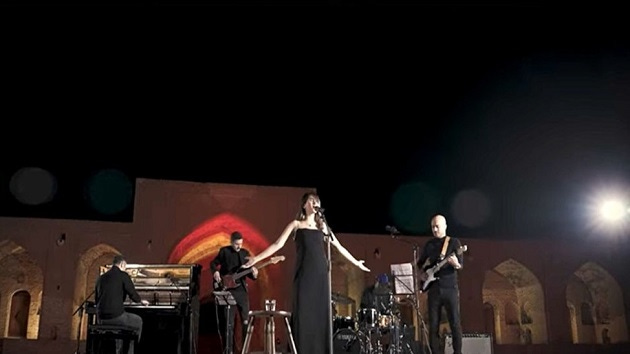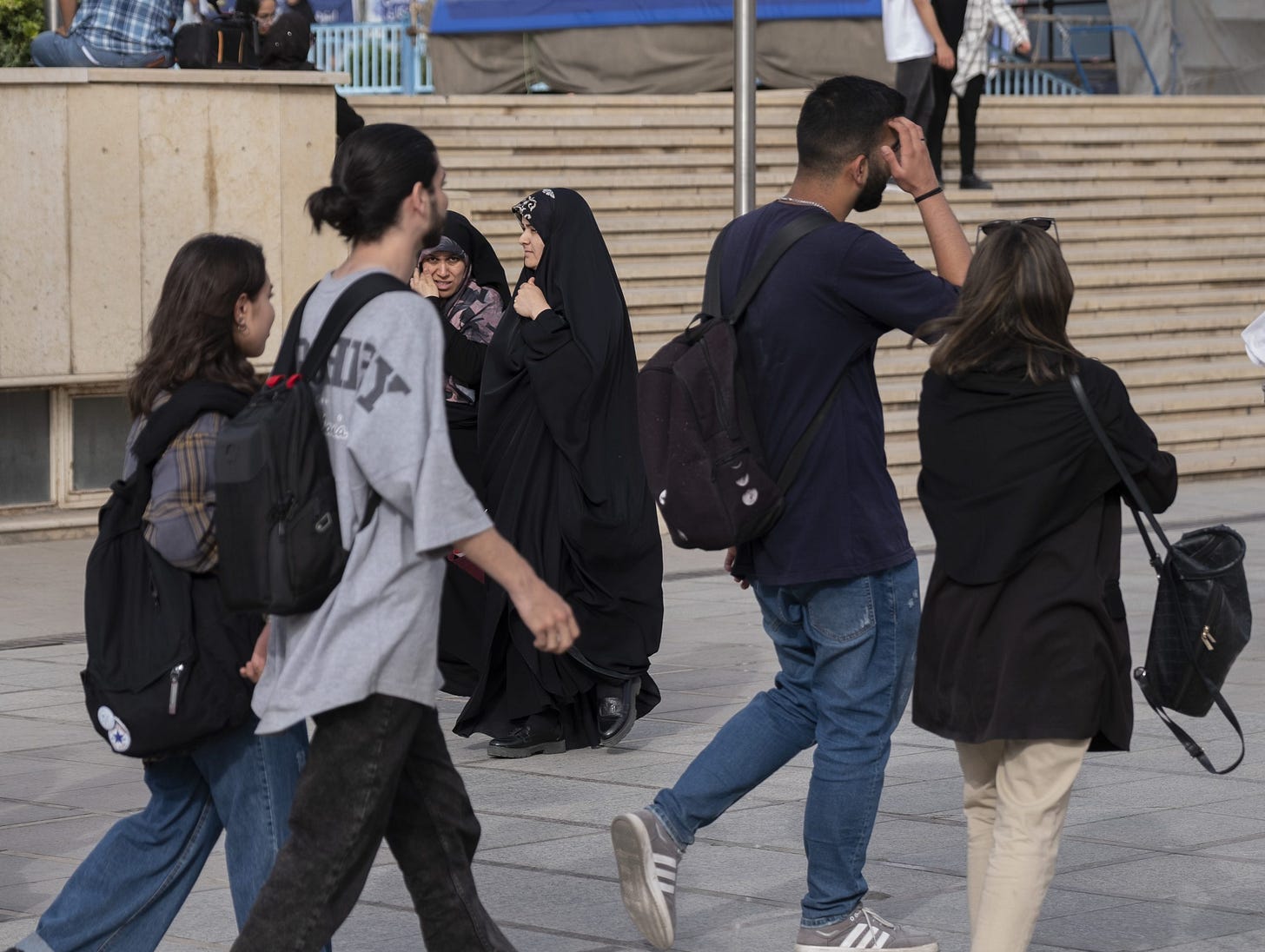The Break of Ayatollahs’ Axis: Will Iran Be Next?
Two Irans: One Backing the Axis of Resistance, One Fighting to Break Free
Iran is a country of contrasts. On one side stands the Islamic Republic—a regime wielding the full force of a suppressive state. On the other side is the Iran of its people: vibrant, defiant, and steeped in a rich cultural heritage that often channels resistance through art, music, and symbolism. These two Irans coexist in opposition, and their fracture has only deepened since the Islamic establishment seized power in 1979. This divide is now starkly visible, playing out in real-time as events unfold. To grasp this dichotomy, let’s examine a single day—December 11, 2024, three days after the fall of Bashar al-Assad’s regime in Syria.
The Regime’s Side: Ayatollah’s Imaginary Resilience
On December 11, 85-year-old Supreme Leader Ayatollah Ali Khamenei made a public appearance after days of silence. Grumpy as ever and visibly shaken, he tried to project strength. Addressing the fall of Syria’s Bashar al-Assad, he predictably blamed Israel, the United States, and an unnamed neighboring country (Turkey) for conspiring to destabilize the region. Dismissing the celebratory crowds in Damascus, Khamenei declared them “deluded” and promised, “Syria will be free again.”
He doubled down on defending the Islamic Republic’s blank-check support for Assad, claiming it was vital for Iran’s security. Drawing on rhetoric from the Iran-Iraq War, he portrayed the alliance as a historical and strategic necessity. “Destabilizing Iran has always been the enemies’ ultimate goal,” he insisted, dismissing predictions of a similar fate awaiting the Islamic Republic. “Our young soldiers want to fight for Hezbollah,” Khamenei proclaimed, painting the regime’s proxy campaigns as evidence of resilience.
Despite his defiance, the cracks in the regime’s narrative were clear. His speech was not broadcast live on state media, likely to allow edits and spin. Hours after it aired, state headlines were flooded with Khamenei’s talking points, but the Iranian people were unconvinced. On social media, users mocked his claims, questioning the regime’s costly support for Assad and drawing comparisons to its own looming collapse.
In a show of force, the regime arrested several journalists critical of its policies just hours after Khamenei’s speech. Yet the tide of criticism continued unabated online, exposing the widening chasm between the state’s manufactured narrative and the people’s growing discontent.
The People’s Side: The Imaginary Concert
That same evening, a very different story unfolded. Iranian singer and composer Parastoo Ahmadi performed a live-streamed concert from a historic caravanserai. Dubbed the “imaginary concert,” it defied the Islamic Republic’s strict bans on female singers and public performances.
Parastoo opened with a poignant declaration: “I am Parastoo, a girl who wants to sing for the people I love. It is a right I never wanted to forgo—to sing for the land I passionately adore.”
“From the blood of our homeland’s youth, tulips have bloomed,”
Wearing a modern, décolleté outfit and performing without a hijab, Parastoo streamed her half-hour concert on YouTube, a platform officially banned in Iran. Her songs, including the protest anthem “From the blood of our homeland’s youth, tulips have bloomed,” celebrated the courage of Iran’s protesters while blending ancient cultural identity with modern resistance.
The concert quickly went viral, becoming a symbol of defiance and creativity, particularly among Iranian women. The historic setting—a neglected caravanserai—became a metaphor for reclaiming Iran’s cultural heritage from the regime. Parastoo’s actions, though risky, underscored a growing trend: the use of art, fashion, and symbolism to resist the regime’s repressive rules.
The Fashion of Resistance; “It’s cool to say No”
Predictably, authorities announced legal action against Parastoo and her band, citing violations ranging from performing as a woman to appearing without a hijab and using banned platforms. But for Iran’s Gen Z, such acts of defiance have become a cultural phenomenon. Resistance is no longer just political; it’s personal, creative, and distinctly modern. “It’s cool to say no to them,” an 18-year-old Iranian girl once told me.
This sentiment has transformed opposition into a lifestyle for millions of young Iranians. By rejecting the regime, they’re not just protesting—they’re asserting their identity, showing the world they aspire to freedom, modernity, and a future beyond the Islamic Republic.
The Fall of Assad: A Turning Point for the Ayatollahs?
Assad’s fall has not directly inspired Iranian opposition—Iranians were already far ahead in their rejection of the regime. But it has shattered the regime’s “Axis of Resistance” narrative. For years, the Islamic Republic has framed its foreign interventions as essential to Iran’s security and regional power. The collapse of Assad’s regime exposes the fragility of this myth. The promised “security” through propping up Assad has failed, and the Revolutionary Guard’s invincibility has been called into question. “Iran will not turn into Syria,” protesters have chanted in recent years, rejecting the regime’s fear created by the regime, mongering that uprisings would lead to chaos and not a regime change.
Unlike other regional uprisings in Egypt, Tunisia, or Syria, Iran’s anti-regime protests have been notably secular. Slogans like “Woman, Life, Freedom” directly challenge the regime’s religious authority.
Where Is Iran Heading?
With over 70% of its population under the age of 44, the Islamic Republic does not represent the aspirations of most Iranians. The regime has failed to provide even basic economic stability, let alone the freedoms that millions of young Iranians dream of. December 11, 2024, serves as a microcosm of this reality: while Khamenei clung to his crumbling ideology, Parastoo’s concert captured the hearts of a nation longing for change.
Assad’s fall is another crack in the regime’s foundation. Iranians don’t need a domino effect—they’re already pushing back, ridiculing the regime’s propaganda, and asserting their own vision for the future. The Ayatollahs now find themselves trapped: continuing their repressive ways risks further domestic rebellion, while meaningful reform, in both domestic and international policies would undermine the very foundation of their rule.
The question is not if the Islamic Republic will fall, but when. And as Iranians have shown time and again, they are nothing if not unpredictable.









Great piece, contrasting Parastoo's defiance and Khamenei's delusion and denial.
A thought that stuck with me from the outset was that the regime's rhetoric also channels resistance - which you'd expect, since they came to power after a revolution - so you have two opposing factions that portray themselves as beleaguered by forces set to destroy them. Of course one of these factions (the opposition) just has better claim to victim status and better values generally, but I can't help but draw yet another connection to U.S. party politics. In both cases there's a conservative side that has massive institutional and cultural bias in its favor (the Electoral College, the senate, FPtP, the 2nd amendment, etc) whose grasp on power is supposedly in constant danger of slippage, while the other side has to constantly manage perceptions of weakness while its true allegiances are questioned from all directions. Thanks again, I enjoy reading perspectives out of Iran.